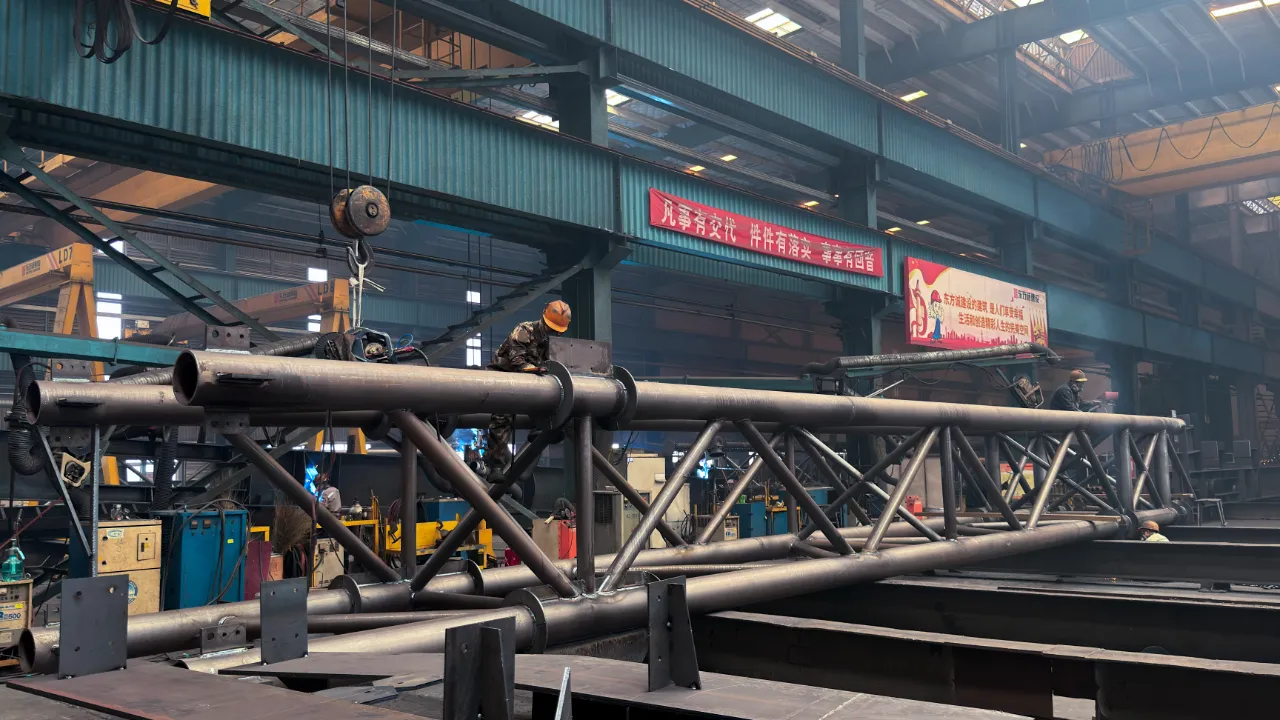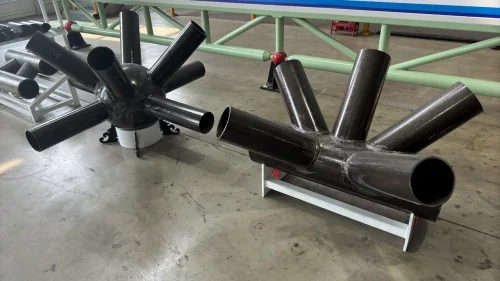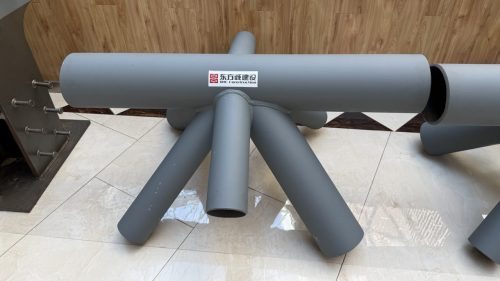Pipe Section Column
Pipe section column use hollow steel tubes as primary load-bearing components. They are known for their clean aesthetic and strong performance in both tension and compression. These structures are frequently used in airports, stadiums, exhibition halls, and public infrastructure.
Key Features:
- High load-bearing capacity: Excellent strength-to-weight ratio with uniform stress distribution.
- Versatile aesthetics: Round or square pipe profiles provide sleek and modern architectural appearance.
- Efficient welding & connection: Compatible with a variety of jointing techniques for structural integrity.
- Durable surface treatments: Can be painted or galvanized to resist corrosion and environmental degradation.
- Architectural flexibility: Allows for curves, bends, and non-linear designs that are difficult with other steel profiles.
Types of Pipe Section Column
- Hollow Section Columns: Made from mild steel, square, rectangular, or circular hollow pipes, these are lightweight yet strong, ideal for frameworks, fencing, and furniture .
- Box Columns: Composite columns assembled from steel plates or sections (e.g., square/rectangular pipes, angle steel), offering larger cross-sections for eccentric load-bearing applications .
- Pipe-Concrete Composite Columns: Steel pipes filled with concrete to enhance load-bearing capacity and fire resistance, commonly used in high-rise buildings .
Materials and Properties
- Mild Steel: Popular for hollow sections due to its balance of strength, weldability, and corrosion resistance (when coated). Grades like EN8 are used for structural durability .
- PE (Polyethylene): Used in lightweight, corrosion-resistant column pipes for submersible pumps, featuring leakproof joints and high tensile strength .
- Stainless Steel: Selected for high-corrosion environments, often in fittings or specialized structural components .
Key Features
- Strength-to-Weight Ratio: Hollow sections provide structural integrity without excessive weight, easing transportation and installation .
- Modularity: Prefabricated sections (e.g., box columns) allow customization for varying load requirements .
- Corrosion Resistance: Coatings or material choices (e.g., PE, galvanized steel) extend lifespan in harsh environments .
Applications
- Construction: Frameworks, supports, and high-rise building columns .
- Industrial Systems: Pipelines with integrated columns for fluid transport (e.g., CEP systems for steam/water circulation) .
- Infrastructure: Bridges, railings, and utility poles .
Design Considerations
- Load-Bearing Requirements: Circular pipes suit axial loads; box columns handle eccentric forces .
- Fabrication Complexity: Box columns require more welding than circular pipes, increasing costs .
- Standards Compliance: Must adhere to codes like ISO 14644-1 (cleanrooms) or ASME B31.4 (pipelines) .





